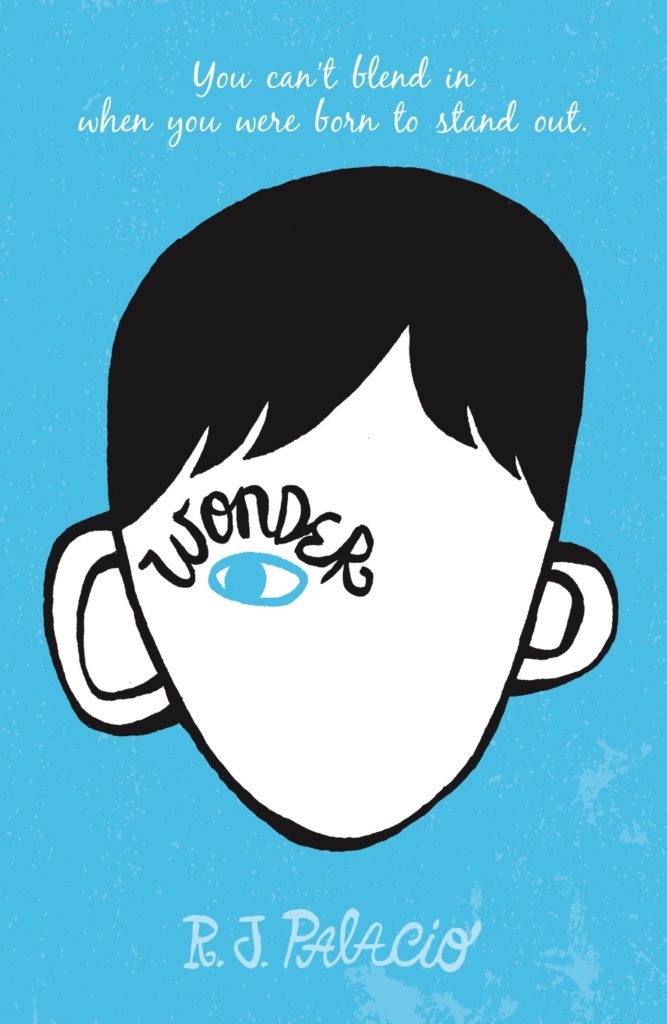

Auggie is ten years old but has never attended school. Frequent hospitalizations led his mom to homeschool him. Auggie doesn’t look like other kids. He has facial abnormalities. Auggie says of his face, “I won’t describe what I look like. Whatever you’re thinking, it’s probably worse.”
When Auggie turns ten, his parents decide to send him to school. Wonder is an account, told from multiple points of view, of that year.
Many events in the story feel true to life, sometimes uncomfortably so. Although adults do their best to set Auggie and his peers up for success, cruel behavior still happens and sometimes spins out of control. For instance, the principal arranges for Auggie to meet some peers before school starts. These classmates have mixed feelings about Auggie, which escalate. One student leads the class in pretending that Auggie has the “plague” and can’t be touched. Another veers between deep humiliation at being seen with Auggie and valuing Auggie’s friendship equally deeply.
The behaviors of Auggie’s peers are aligned with current research on bullying and its prevention. Adults don’t always know about bullying that’s going on at school, and the adults in Auggie’s world don’t always know about the mean behaviors that are going on. In the book, the one classmate who reaches out to Auggie on the first day of school truly makes a difference. This part of the story parallels the findings of the Youth Voice project, which reports that when even one student befriended children who were targets of bullying, it helped.
I’ve written before about how reading picture books aloud to children can be a powerful bullying prevention tool, and there are lesson plans for doing this with younger and older students in How to Bullyproof Your Classroom. High quality young adult novels can be used similarly with older students. Children who aren’t ready to discuss events that have happened in their own classroom, or behaviors that they have done or might do, are far more comfortable discussing what fictional characters have done or might do.
Like many books that feature bullying and mean behavior, I don’t recommend giving Wonder to students without including opportunities for group reflection. Many of the events in the story feel uncomfortably true to life. Without an opportunity to reflect with a caring adult, children might be drawn to imitate some pretty mean behaviors.
Wonder ends with a series of positive events that felt just a bit unrealistic to me. However, the ending provided an uplifting vision of how a school might come together to support a classmate who doesn’t look like everyone else. I can imagine a fifth grade class listening to the final chapters and imagining themselves able to rise to the occasion and be brave, inclusive, and kind.
If you read Wonder aloud to your students, I’d love to hear about your experiences.
Caltha Crowe’s How to Bullyproof Your Classroom includes ten lesson plans that incorporate children’s literature, plus an appendix with more suggestions for books to read with your class.
“. . . like sitting with a smart and practical teacher who knows how to bring out the kindness in people around her.”
—Martha Hanley, grade 4 teacher, Grafton, MA